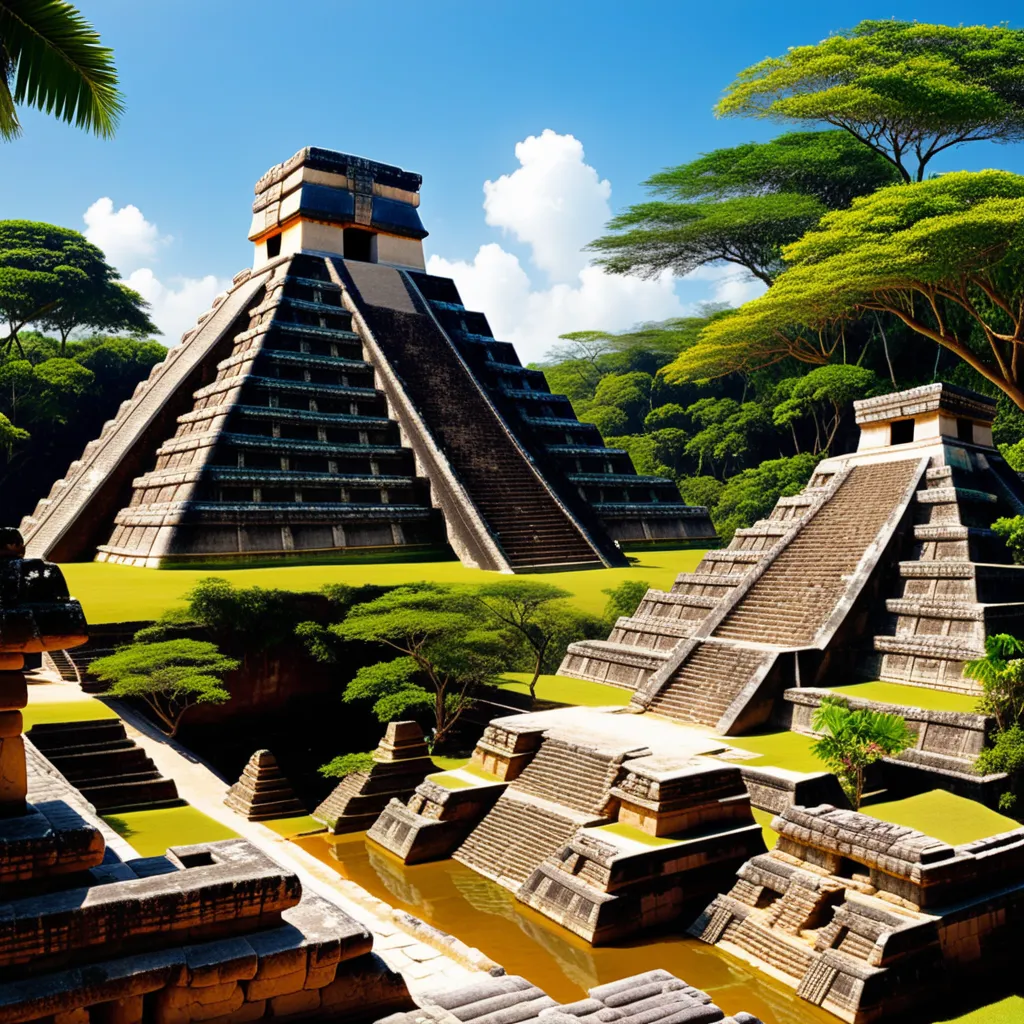Unlocking the Mysteries of Ancient Mayan Civilization
Embarking on a journey through the dense jungles of Central America, I found myself captivated by the enigmatic remnants of a once-mighty civilization—the Ancient Maya. The echoes of their cultural brilliance and architectural marvels reverberate through time, leaving archaeologists and adventurers alike in awe. Join me as we delve into the mysteries of the Ancient Mayan civilization, unlocking the secrets hidden within the remnants of their cities and the pages of their hieroglyphic writings.

The Marvels of Mayan Architecture
Pyramid Cities in the Jungle
Standing at the base of a towering Mayan pyramid, I couldn't help but marvel at the architectural ingenuity of a civilization that flourished over a millennium ago. Cities such as Tikal and Calakmul emerged from the dense jungles, their towering structures reaching towards the heavens. The Mayans' ability to construct such monumental edifices without the aid of modern technology remains a testament to their advanced engineering knowledge.
Astronomical Precision in City Layouts
One of the intriguing aspects of Mayan architecture is its alignment with celestial phenomena. Exploring the ruins of Copán, I discovered that the layout of certain structures correlated with astronomical events like solstices and equinoxes. The Mayans, keen astronomers, integrated their celestial observations into the very fabric of their cities, creating a harmonious blend of urban planning and cosmic understanding.
Deciphering the Hieroglyphs
The Maya Script: A Linguistic Puzzle
The Mayans developed a complex writing system that utilized hieroglyphs—a combination of logograms and syllabic symbols. Standing before the stelae at Quiriguá, adorned with intricate glyphs, I marveled at the linguistic prowess encapsulated in these inscriptions. Deciphering the Maya script has been a monumental task for scholars, akin to unraveling a linguistic puzzle that holds the keys to understanding their history, rituals, and daily life.
The Breakthroughs of Epigraphers
Recent decades have witnessed significant breakthroughs in the decipherment of Mayan hieroglyphs. Epigraphers have painstakingly decoded the intricate symbols, revealing dynastic histories, ceremonial events, and the intricate Mayan calendar system. It's a thrilling journey of linguistic discovery that brings us closer to understanding the stories etched into the stone monuments by the ancient scribes.
The mysteries of Mayan Mathematics
Ingenious Mathematical Concepts
The Maya were accomplished mathematicians, with a numerical system that included the concept of zero—a remarkable achievement for their time. Visiting the observatory at Caracol, I marveled at their precise calculations of celestial cycles and their sophisticated understanding of mathematics. The Mayans' mathematical prowess extended to their intricate calendar systems and complex astronomical predictions.
The Enigma of the Long Count Calendar
At the heart of Mayan timekeeping is the Long Count calendar, a system that measures time in a series of cycles. Standing in the shadow of El Castillo at Chichen Itzá during the equinox, I witnessed the phenomenon of the descending serpent—a testament to the Mayan calendar's accuracy. The Long Count calendar not only tracked celestial events but also played a crucial role in religious ceremonies and societal milestones.
Rituals and Beliefs: Unveiling the Spiritual Realm
Sacred Cenotes and Rituals
Mayan spirituality was deeply intertwined with the natural world, and cenotes (natural sinkholes) held profound significance. Exploring the Sacred Cenote at Chichén Itzá, I learned that these water-filled sinkholes were considered portals to the underworld. Rituals involving offerings and sacrifices were conducted to appease deities and maintain the delicate balance between the earthly and supernatural realms.
Shamanic Journeys and Visionary Plants
The Mayans engaged in shamanic practices and ritualistic ceremonies often aided by hallucinogenic plants. My journey to the archaeological site of Palenque revealed the remnants of ceremonial structures where shamanic rituals likely took place. The use of visionary plants played a role in the Mayans' spiritual quests, offering a pathway to commune with the divine and gain insights into the mysteries of existence.
Decline and Abandonment: Unraveling the End
Environmental Challenges and Population Pressures
The decline of the Ancient Mayan civilization is a puzzle that historians and archaeologists continue to unravel. Visiting the abandoned city of Calakmul, hidden in the dense jungle, I pondered the factors that may have contributed to the collapse. Environmental challenges, population pressures, and resource depletion are among the proposed theories that shed light on the gradual abandonment of once-thriving urban centers.
Legacy and Cultural Continuity
While the Ancient Mayan civilization faced challenges leading to the decline of its classical period, it's important to note that the Mayan people persist to this day. The legacy of their cultural achievements endures in the traditions, languages, and customs of contemporary Mayan communities. Exploring the living cultural continuity provides a nuanced perspective on the resilience and endurance of the Mayan people.
Conclusion: A Timeless Tapestry of Legacy
As I concluded my journey through the remnants of the Ancient Mayan civilization, I couldn't help but feel a profound sense of connection to a civilization that left an indelible mark on human history. The mysteries of Mayan architecture, hieroglyphs, mathematics, and spirituality form a timeless tapestry that continues to capture the imagination of explorers and scholars alike. The legacy of the Ancient Maya serves as a testament to the ingenuity of human creativity, a reminder that even in the face of enigma and decline, the echoes of a once-great civilization persist through the ages.







